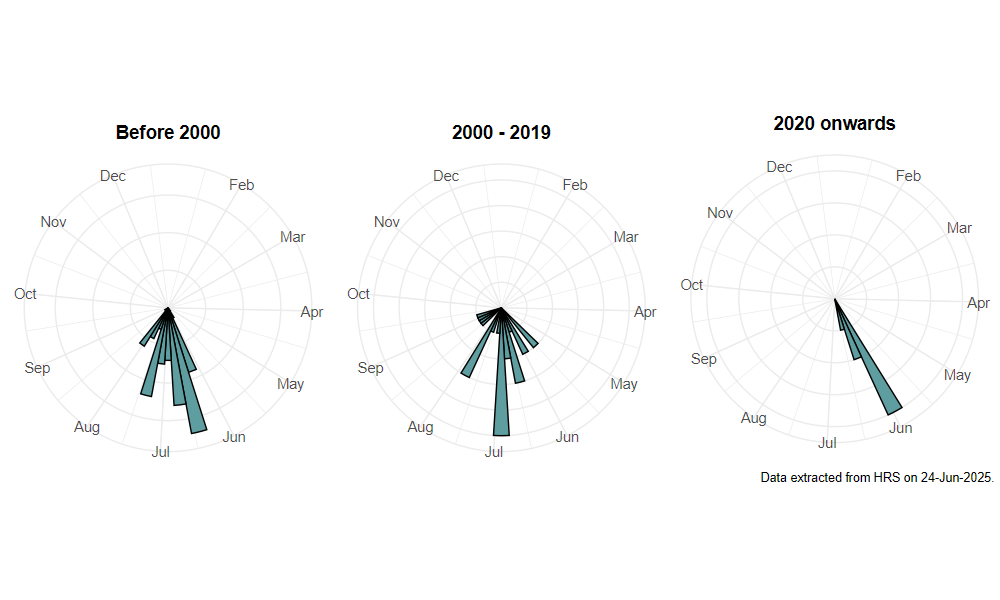Pelecocera scaevoides (Fallén, 1817)
Identification
Identification difficulty = 3. ![]()
![]() according to Ball & Morris, 20241
according to Ball & Morris, 20241
Synonymy
Previously known as Chamaesyrphus scaevoides, this genus has been sunk in Pelecocera (Speight, 2017)2.
Biology
Nothing is known of the larval stages of this species. Adults are usually swept from heathy vegetation along footpaths and ride margins in coniferous woodland. Most sites involve Caledonian pine forests but some are plantations of non-native species. Adults have been observed visiting Tormentil Potentilla erecta and Ragwort Senecio jacobaea flowers along the edges of such paths.
Flight period
The following plots show the number of unique records per week excluding those reported to be of immature stages.

Status
Lowe risk (Nationally scarce) - Ball & Morris, 20143. Rare (RDB3) - Falk, 19914 and Shirt, 19875.
Distribution
Occurs widely across the Highlands around the Cairngorms, and through Ross & Cromarty. Adults can be relatively abundant where it occurs.

Trends
The following plots show the Frescalo TFactor vs year and a map of the rescaled frequency (all records) for the species.
-
Ball, S., & Morris, R. (2024). Hoverflies of Britain and Ireland. WILDGuides (3rd ed.). Oxford: Princeton University Press. ↩
-
Speight, M. (2017). Species accounts of European Syrphidae ( No. 97). yrph the Net, the database of European Syrphidae (Diptera) (p. 294). Dublin: Syrph the Net publications. Retrieved from https://pollinators.ie/wordpress/wp-content/uploads/2018/05/StN-2017-Species-Accounts.pdf ↩
-
Ball, S., & Morris, R. (2014). A review of the scarce and threatened flies of Great Britain. Part 6: Syrphidae. ( No. 9). Species status (pp. 1–130). Peterborough: JNCC. ↩
-
Falk, S. (1991). A review of the scarce and threatened flies of Great Britain. ( No. 39). Research and Survey in Nature Conservation (pp. 1–194). Peterborough: NCC. ↩
-
Shirt, D. (Ed.). (1987). Red Data Books: 2. Insects. Peterborough: NCC. ↩